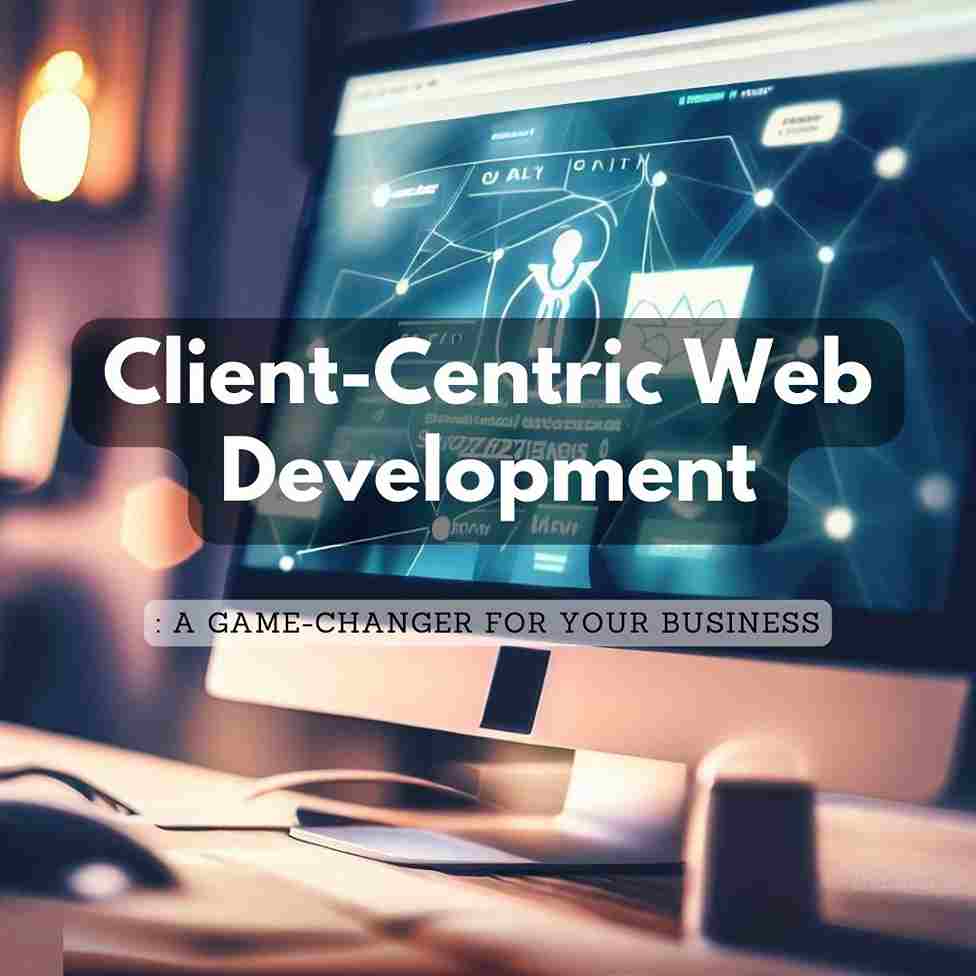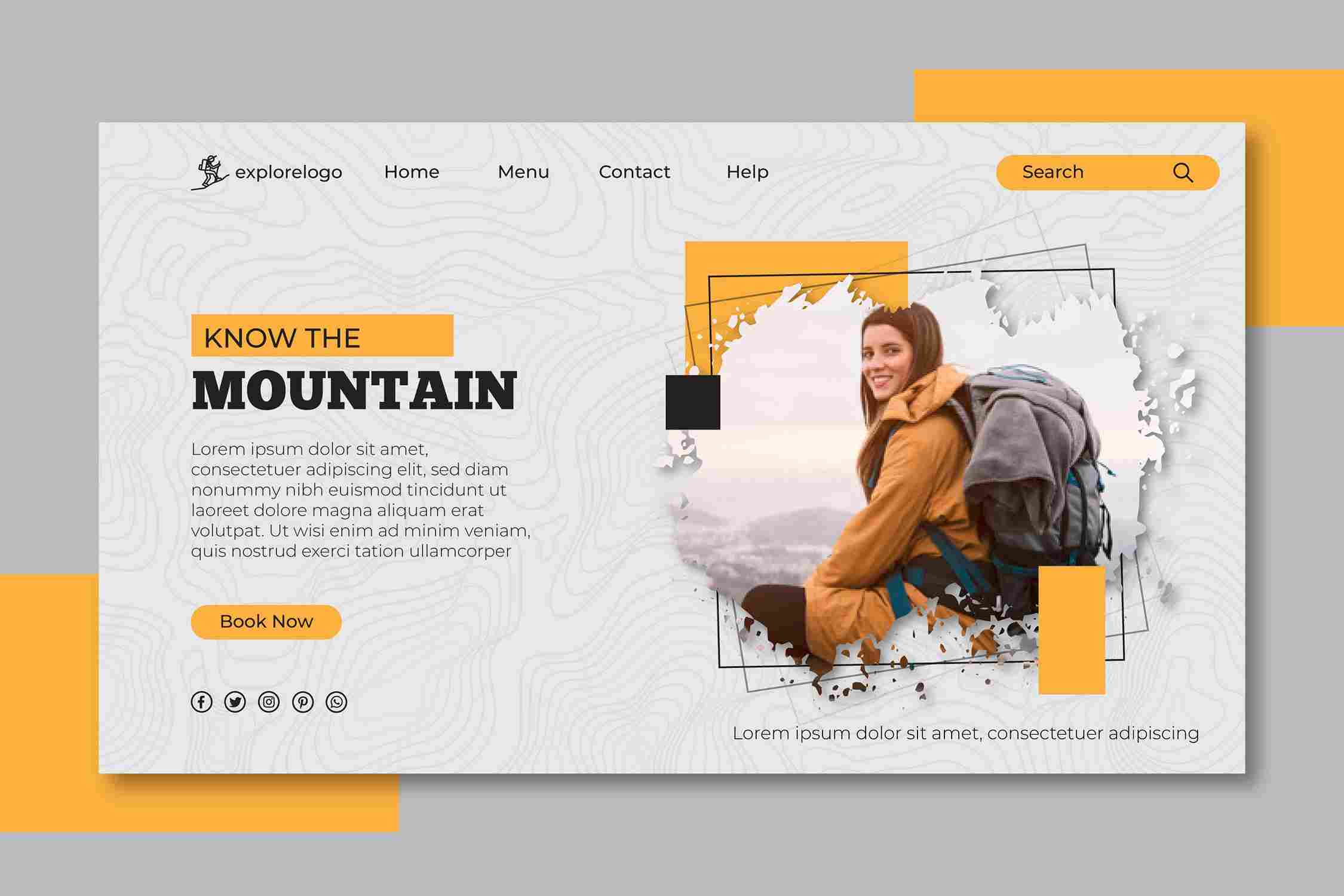Client-Centric Web Development: A Game-Changer for Your Business
Discover how Client-Centric Web Development can transform your business by prioritizing user engagement, enhancing conversion rates, and building brand loyalty. Explore the benefits and implementation of this game-changing approach.
Introduction
In the ever-evolving landscape of the digital world, where competition is as fierce as a hungry lion chasing its prey, businesses must adapt or risk extinction. In this digital age, having a stellar online presence isn't just an option; it's a necessity! Your website is your virtual storefront, and just like in the real world, first impressions matter. That's where "Client-Centric Web Development: A Game-Changer for Your Business" comes into play.
Picture this: a website that doesn't just showcase your products or services but engages, captivates, and converts visitors into loyal clients. Yes, you heard it right! This revolutionary approach to web development is all about putting your clients at the heart of everything, and it's about transforming the way you do business online.
So, what exactly is client-centric web development, and how can it revolutionize your business? Buckle up, dear reader, because we're about to take you on a thrilling ride through the world of client-centric web development and reveal how it can be a game-changer for your business!
Understanding Client-Centric Web Development
What is Client-Centric Web Development?
Client-centric web development is a breath of fresh air in the world of web design and development. It's a philosophy that prioritizes your clients' needs, preferences, and experiences above all else. Instead of the traditional one-size-fits-all approach, client-centric web development tailors your website to cater to the unique tastes and expectations of your target audience.
Think of it as having a personal chef who crafts a menu just for you, taking into account your dietary preferences, allergies, and culinary dreams. With client-centric web development, your website becomes a personalized digital space that resonates with your clients on a profound level.
How Does It Differ from Traditional Web Development?
Traditional web development often follows a rigid template-based approach. It's like going to a fast-food joint where you get the same burger as everyone else. Sure, it gets the job done, but it lacks that wow factor. In contrast, client-centric web development is more like dining at a Michelin-starred restaurant, where every dish is a masterpiece tailored to your exact taste.
In traditional web development, the focus is often on aesthetics and technicalities, while client-centric web development zooms in on the user experience. It asks questions like, "What does your ideal client want to see on your website?" and "How can we make their journey on your site seamless and enjoyable?"
The Benefits of Going Client-Centric
Boosting User Engagement
In the digital realm, engagement is the name of the game. You want your visitors to be like kids in a candy store, unable to resist clicking, scrolling, and exploring every nook and cranny of your website. Client-centric web development achieves just that by creating an online environment that feels tailor-made for your clients.
With personalized content, intuitive navigation, and interactive features, you're not just presenting information to your audience; you're inviting them on an exciting journey. This boosts user engagement, keeps visitors on your site longer, and increases the chances of conversion.
Enhancing Conversion Rates
Conversions are the holy grail of online business. Whether it's signing up for a newsletter, making a purchase, or requesting a quote, you want your visitors to take action. Client-centric web development is your secret weapon for achieving this. By understanding your client's pain points and desires, you can design your website to guide them seamlessly toward those conversion points.
Imagine your website as a GPS, helping your clients navigate through the digital maze and arrive at their desired destination. It's not just about providing information; it's about persuading and guiding your audience toward the actions you want them to take.
Building Brand Loyalty
In a world flooded with choices, brand loyalty is gold. Clients who feel understood and valued are more likely to stick around. Client-centric web development goes beyond mere transactions; it's about building relationships. When your website caters to your clients' needs and preferences, you're sending a powerful message: "We get you, and we're here to make your life better."
These positive interactions create a bond that transforms one-time buyers into loyal brand advocates. It's like having an army of cheerleaders who not only buy from you but also promote your business to others. Now, that's a game-changer!
The Nuts and Bolts of Client-Centric Web Development
Tailored Content
Content is king, and in the realm of client-centric web development, it reigns supreme. To truly connect with your audience, you must speak their language, address their pain points, and offer solutions that resonate with them. This means creating content that's not just informative but also relatable and valuable.
-
Persona-Based Content: Understanding your client personas is key. Create content that directly addresses the needs and interests of each persona. If you're selling running shoes, a blog post on "How to Choose the Perfect Running Shoe for Beginners" might be just what a novice runner needs.
-
Personalized Recommendations: Ever noticed how Netflix suggests movies you'll love? That's the power of personalized recommendations. Implementing a similar feature on your e-commerce site can skyrocket your sales. "Clients who bought this also liked…" – it's pure gold.
Intuitive Navigation
Imagine walking into a store where everything is haphazardly placed, and there are no signs to guide you. Frustrating, right? Your website is no different. If visitors can't find what they're looking for quickly, they'll bounce off faster than a kangaroo on a caffeine rush.
-
User-Centric Menu: Design a menu that aligns with your client's thought processes. Use clear, intuitive labels and organize content logically. Think of it as laying out a roadmap for your visitors.
-
Search Functionality: Implement a robust search feature. Clients who know what they want should be able to find it in a jiffy. Autocomplete, filters, and suggestions can make the search experience a breeze.
Interactive Elements
Remember, you're not just talking to your clients; you're engaging in a conversation. Interactive elements are your way of saying, "We're here to listen and respond."
-
Live Chat: A live chat feature lets clients connect with your team in real-time. It's like having a virtual salesperson available 24/7 to answer questions and offer assistance.
-
Feedback Forms: Encourage feedback and actively seek it. Clients love to share their opinions, and their insights can be invaluable for making improvements.
-
Surveys and Polls: Want to know what your clients really think? Ask them through surveys and polls. Their responses can help you fine-tune your offerings and customer experience.
Conclusion
In the digital jungle, where businesses fight tooth and nail for survival, client-centric web development emerges as the ultimate game-changer. It's not just about having a pretty website; it's about having a website that truly understands and connects with your clients.
By prioritizing user engagement, enhancing conversion rates, and building brand loyalty, client-centric web development offers a blueprint for sustainable growth and success in the digital age. It's the difference between a bland, forgettable online presence and a thriving, customer-focused digital empire.
So, if you're ready to revolutionize your business, embrace the power of client-centric web development. Your clients will thank you with their loyalty and their wallets, and that, my friend, is the ultimate game-changer for your business.
Share This Post
Related Articles
What is a Portfolio Website?
A portfolio website is a digital showcase of your skills, achievements, and projects. It allows you to present your work to potential clients, employers, or collaborators in a professional and engaging way. A portfolio website can help you stand out from the crowd, demonstrate your expertise, and increase your visibility online.
What is .htaccess File?
.htaccess is a configuration file that allows web server administrators to control various aspects of their websites, such as access permissions, redirections, caching, and security. The file name starts with a dot (.) to indicate that it is a hidden file in Unix-like systems. The file is usually placed in the root directory of the website or in any subdirectory where the settings should apply.
Web Development: Top Tools for Beginners
Web development is a broad and dynamic field that requires constant learning and updating of skills. If you are a beginner who wants to start your web development journey, you might be overwhelmed by the number of tools available. However, you don't need to master them all to create a functional and attractive website. Here are some of the top tools for beginners that can help you with web development
What Are Different Types of Web Developer?
Web developers are professionals who create websites and web applications using various technologies and tools.
What is the difference between HTML and XHTML?
HTML and XHTML are both markup languages that are used to create web pages. HTML stands for HyperText Markup Language, while XHTML stands for eXtensible HyperText Markup Language. The main difference between HTML and XHTML is that XHTML follows the rules of XML, which is a more strict and well-formed syntax than HTML.
Related FAQ
No related FAQ.
Say Hello
To Your Dream





